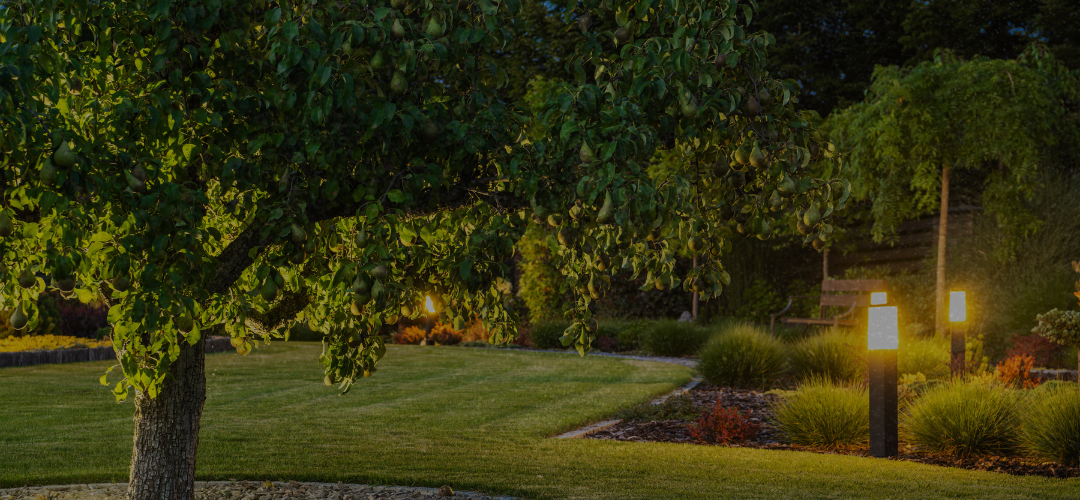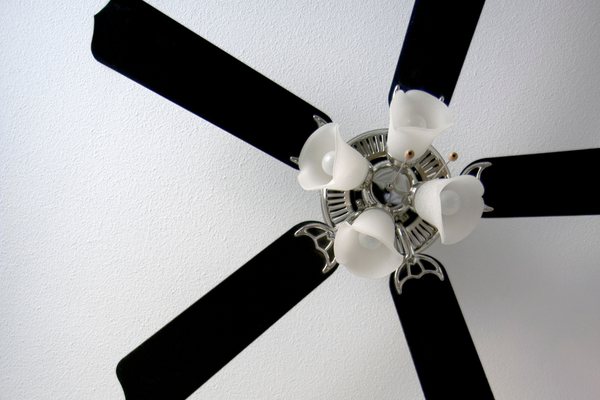What makes indoor lighting effective? Good lighting can change how a home feels and works. Many Fort Mill, SC homeowners don’t realize how much the right light fixtures affect their daily comfort, work output, and even their home’s value. Poor lighting makes rooms feel cold and unwelcoming. Great lighting creates warm spaces where families want to spend time together.
How does proper lighting impact your home? Proper room lighting does more than just help people see better. The right lights can make small rooms look bigger, highlight beautiful home features, and create the perfect mood for any activity. Studies show that good lighting can boost energy levels during the day and help people sleep better at night. Homes with well-planned lighting systems also tend to sell faster and for higher prices than those with basic fixtures.
What are the three main types of lighting? There are three main types of lighting that work together to create the perfect atmosphere in any room:
- Ambient lighting – provides general illumination for the whole space
- Task lighting – focuses bright light where people need to work or read
- Accent lighting – highlights artwork, plants, or architectural details that make a home special
How do light color and brightness affect mood? The color and brightness of lights also affect how people feel. Warm, soft lights help people relax in the evening. Bright, cool lights help people stay alert and focused during work hours. Getting the right balance of these lighting types can make every room in a Fort Mill home more comfortable and functional.

Table of Contents

Understanding Lighting Basics
Types of Light Fixtures
What lighting fixtures work best in modern homes? Modern homes have many different lighting options to choose from. Each type serves a specific purpose and works differently in various rooms. Understanding these options helps homeowners make smart choices about their lighting systems.
Which overhead fixtures provide the best room lighting?
Chandeliers work well in dining rooms and entryways where they can make a statement. Flush mount fixtures sit close to the ceiling and work great in bedrooms and hallways with lower ceilings. Pendant lights hang down from the ceiling on cords or chains. They look great over kitchen islands, breakfast bars, and dining tables.
How do wall-mounted lights save space? Wall-mounted lighting saves floor and table space while adding style to any room. Sconces mount directly to walls and can point light up or down. They work well in hallways, bathrooms, and next to beds for reading. Picture lights mount above or below artwork to show off paintings and photos. These small fixtures can make a big difference in how art looks on the wall.
Why choose portable lighting options? Floor and table lamps give homeowners flexibility to change their lighting as needed. Floor lamps work great next to reading chairs or in dark corners that need extra light. Table lamps on end tables, desks, and nightstands provide focused light right where people need it. Many electric lanterns now come as portable options that can move from room to room as needed.
What makes built-in lighting special? Built-in lighting creates a clean, modern look in any home. Recessed lights sit flush in the ceiling and provide even light coverage. Under-cabinet lights in kitchens help people see their work better. Cove lighting hides behind crown molding or in ceiling details to create a soft glow around room edges.
Color Temperature Guide
How does light color affect room atmosphere? Light color affects how rooms feel and how well people can see different tasks. Color temperature is measured in Kelvin (K), and different temperatures work better for different activities and rooms.
What color temperature is best for relaxation? Warm white (2700K-3000K) creates a cozy, relaxing feeling that works perfectly in bedrooms, living rooms, and dining areas. These lights have a slightly yellow tone that makes people feel comfortable and helps them unwind after busy days. Many homeowners choose warm white for lantern lighting on porches and patios where they want to create a welcoming atmosphere.
Which color temperature works best for work areas? Cool white (3500K-4100K) provides a clean, neutral color that works well in kitchens, bathrooms, and work areas. This color helps people see colors more accurately and provides good light for daily tasks like cooking, grooming, and cleaning. Cool white works well in areas where people need to be alert and focused.
When should you use daylight bulbs? Daylight bulbs (5000K-6500K) mimic natural sunlight and work great for detail work, crafts, and reading. These lights help reduce eye strain during close work and make it easier to see small details. Home offices, craft rooms, and work benches benefit from daylight bulbs that help people stay focused and productive.
Can you mix different light colors in one room? Mixing different color temperatures in the same room can create an unpleasant feeling. The room will feel unbalanced and may make people uncomfortable without them knowing why. Sticking to similar color temperatures throughout connected spaces creates a more harmonious feeling in the home.
Brightness Levels (Lumens)
What’s the difference between lumens and watts? Lumens measure how much light a bulb produces, while watts measure how much electricity it uses. Modern LED bulbs produce more lumens per watt than older bulb types, which saves money on electric bills while providing better light.
How much light does each room need?
Living rooms typically need 10-20 lumens per square foot for general lighting. Kitchens need 30-40 lumens per square foot because people do detailed work there. Bedrooms can work well with 10-20 lumens per square foot since they’re mainly used for relaxation.
What does layered lighting mean? Layering different brightness levels creates the most comfortable and flexible lighting:
- General room lighting – provides the base layer that makes the space usable
- Task lighting – adds focused brightness where people work or read
- Accent lighting – adds small amounts of light to highlight special features or create mood
How do dimmer switches improve lighting? Dimmer switches give homeowners control over brightness levels throughout the day. Bright lights help people wake up and stay alert in the morning. Dimmed lights in the evening help people relax and prepare for sleep. A good lighting outlet setup allows for easy control of different light levels in each room.

Living Room Lighting Solutions
Creating a Welcoming Atmosphere
What makes living room lighting welcoming? The living room serves as the heart of most Fort Mill homes, where families gather to relax, watch TV, and spend time together. Good lighting makes this space comfortable for all these different activities while creating a warm, inviting atmosphere that welcomes both family and guests.
Should you rely only on overhead lighting? Central overhead lighting provides the foundation for any living room lighting plan. A ceiling fixture, chandelier, or series of recessed lights gives general illumination that makes the room usable and safe. Yet overhead lighting alone creates harsh shadows and can make the space feel cold and uninviting. The best room lighting combines overhead fixtures with other light sources at different levels.
Where should you place floor lamps? Floor lamps in corners and next to seating areas add warm, ambient light that makes the room feel cozy. These lamps work especially well next to reading chairs where people like to curl up with books or magazines. Tall floor lamps can also help balance the visual weight of tall furniture pieces and make rooms feel more proportional.
How do table lamps create atmosphere? Table lamps on end tables, coffee tables, and side tables provide pools of warm light that create intimate conversation areas. These lamps work at eye level when people are sitting, which feels more natural and comfortable than light coming only from above. Multiple table lamps throughout the room give flexibility to light just the areas being used.
What can accent lighting highlight? Accent lighting highlights artwork, architectural features, and decorative objects that make the living room special. Track lighting, picture lights, or small recessed spots can showcase paintings, sculptures, or built-in bookcases. Rope lighting or LED strips behind entertainment centers or along crown molding create a soft background glow that adds depth to the room.
Lighting Zones
How should you divide large living rooms? Large living rooms work better when divided into different lighting zones that serve specific purposes. Each zone can have its own lighting controls so people can light only the areas they’re using.
What lighting works around TVs? The entertainment area around the TV needs careful lighting planning. Too much light creates glare on the screen, while too little light causes eye strain. Wall-mounted sconces or floor lamps behind or to the sides of seating provide enough light for safety without interfering with screen viewing. Bias lighting, which is a strip of LED lights behind the TV, can reduce eye strain during long viewing sessions.
How do you light conversation areas? Conversation seating areas benefit from warm, soft lighting that helps people feel comfortable talking together. Table lamps on end tables next to sofas and chairs create intimate lighting that encourages conversation. Floor lamps behind seating can provide additional ambient light without taking up valuable table space.
What about fireplace lighting? Fireplace areas often serve as natural focal points that need special lighting consideration. The fireplace provides some light when in use, but additional accent lighting can highlight the mantel and surround even when the fire isn’t burning. Wall-mounted sconces on either side of the fireplace or recessed lights above it can keep this area visually important throughout the year.

Kitchen Lighting Strategies
Task-Oriented Approach
Why do kitchens need more light? Kitchens require more light than most other rooms because people do detailed work there like reading recipes, chopping vegetables, and cooking food. Good kitchen lighting prevents accidents and makes cooking more enjoyable and efficient.
What makes under-cabinet lighting effective? Under-cabinet LED strips provide focused light right on countertop work areas where people prepare food. These lights eliminate shadows that overhead fixtures create when people work at counters. LED strips produce little heat, which is important in kitchens where temperatures can already be high from cooking. They also last longer than other bulb types and use less electricity.
How should pendant lights be positioned? Pendant lights over kitchen islands and peninsulas serve both task and decorative purposes. They provide focused light for food preparation, eating, and homework while adding style to the kitchen. The height of pendant lights matters – they should hang 30-36 inches above counter height to provide good light without blocking sight lines across the kitchen.
What’s the best recessed lighting layout? Recessed lighting provides general illumination throughout the kitchen. These lights should be spaced evenly to avoid dark spots and shadows. In galley kitchens, a single row of recessed lights down the center works well. In larger kitchens, lights should be positioned to provide even coverage over all work areas. Recessed lights work especially well over sinks and stoves where pendant lights might get in the way.
Safety and Functionality
How does lighting affect kitchen safety? Kitchen safety depends heavily on having adequate light where people work with sharp knives and hot appliances. Dark areas in kitchens can lead to cuts, burns, and other accidents that could easily be prevented with proper lighting.
Which areas need the brightest light? Food preparation areas need the brightest light in the kitchen. Cutting boards, mixing areas, and stove tops should have multiple light sources to eliminate shadows. If someone’s body blocks light from overhead fixtures, under-cabinet lights can provide backup illumination. This layered approach means there’s always enough light to work safely.
What causes work surface shadows? Work surface shadows occur when people block overhead light while working. Under-cabinet lighting solves this problem by lighting counters from the front edge instead of from above. This placement eliminates most shadows and makes it easier to see what’s being prepared. It also makes it easier to read measuring cups, timers, and recipe cards.
Why install dimmer switches in kitchens? Dimmer switches add versatility to kitchen lighting by allowing different light levels for different activities. Bright light is needed for detailed food preparation, but softer light creates a more comfortable atmosphere for casual meals and evening conversations. Dimmers also save energy and extend bulb life when full brightness isn’t needed.

Bedroom Lighting for Rest and Function
Sleep-Friendly Options
What lighting helps with sleep? Bedrooms need lighting that helps people both relax and function. The best light for room relaxation is soft and warm, while task areas might need brighter, more focused lighting for activities like reading or getting dressed.
How should bedside lamps be positioned? Bedside table lamps provide perfect reading light while keeping the rest of the room dim. These lamps should be tall enough that the bottom of the shade is at shoulder level when someone is sitting up in bed. This position prevents glare while directing light onto books or tablets. Warm white bulbs (2700K-3000K) work great for bedtime reading because they don’t interfere with natural sleep cycles.
What are the benefits of adjustable reading lights? Reading lights with adjustable positioning give people control over light direction and intensity. Swing-arm wall sconces mounted next to the bed save nightstand space while providing focused light exactly where needed. These lights can be turned off and on independently, which is helpful when partners have different bedtime schedules.
Should bedrooms have overhead lighting? Overhead fixtures with dimming capabilities provide general room lighting that can be adjusted throughout the day. Bright light helps people wake up and get dressed in the morning, while dimmed light creates a relaxing atmosphere in the evening. Ceiling fans with light kits serve double duty by providing both lighting and air circulation.
Closet and Dressing Area Lighting
Why do closets need better lighting? Closets often have poor lighting that makes it hard to see clothing colors and details. Good closet lighting helps people choose outfits and find items quickly.
What’s the best closet lighting solution? LED strip lights work excellently in closets because they provide even light coverage without taking up space. These lights can mount on closet rods, shelves, or walls to illuminate hanging clothes and folded items. LED strips produce little heat, which is important in small, enclosed closet spaces.
How should vanity areas be lit? Vanity lighting in dressing areas needs to light faces evenly without creating harsh shadows. Lights on both sides of mirrors work better than single lights above mirrors. This side lighting eliminates shadows under eyes and chin that make it hard to apply makeup or shave accurately.
When are motion sensors useful? Motion sensors in closets and dressing areas provide convenience and safety. These sensors turn lights on automatically when people enter and turn them off after they leave. This feature prevents people from fumbling for light switches in dark spaces and saves energy by turning lights off when spaces aren’t being used.

Bathroom Lighting Considerations
Vanity Area Illumination
What makes bathroom lighting challenging? Bathroom lighting needs to serve multiple purposes while dealing with moisture and humidity. The vanity area gets the most use and needs the most careful lighting planning.
Why are side-mounted sconces better? Side-mounted sconces reduce shadows better than overhead-only lighting. When lights shine down from above, they create shadows under eyebrows, noses, and chins that make grooming tasks difficult. Sconces mounted on either side of mirrors at face height provide even light that eliminates most shadows.
What are LED mirror lights? LED mirror lights built into or around bathroom mirrors provide excellent task lighting right where people need it. These lights often have color temperature adjustment features that let people choose warmer light for relaxing baths or cooler light for detailed grooming tasks. Some LED mirror lights also include magnification areas for close work.
What’s wrong with overhead-only lighting? Overhead-only lighting mistakes are common in bathrooms but create problems for daily use. A single ceiling fixture above a mirror creates unflattering shadows and makes it hard to see clearly for shaving, applying makeup, or other grooming tasks. Combining overhead lighting with side lighting creates much better results.
Shower and Bath Lighting
What fixtures work in wet areas? Wet bathroom areas need special fixtures that can handle moisture safely. These areas also need good light for safety and comfort while bathing.
How do you light shower areas safely? Recessed lights rated for wet locations work well in shower areas. These fixtures have special seals that prevent moisture from getting into electrical connections. They should be positioned to light the shower area without creating glare when people are standing under the water. Angled recessed lights can help direct light where needed while avoiding direct glare.
What’s the best shower light placement? Light placement in shower and bath areas affects both safety and comfort. Lights positioned directly overhead can create glare when people look up. Angled or multiple light sources provide better illumination without uncomfortable glare. Dimmer controls let people adjust light levels for relaxing baths versus quick showers.
How can night lighting improve bathroom safety? Night lighting provides safety for midnight bathroom trips without being so bright that it wakes people up completely. Small LED nightlights, motion-activated floor lights, or dimmed overhead fixtures can provide just enough light for navigation without disturbing sleep cycles.

Dining Room Ambiance
Statement Lighting Pieces
How can dining room lighting make a statement? Dining rooms offer opportunities to create dramatic lighting effects with statement fixtures that serve as room focal points. These fixtures need to provide good light for meals while creating the right atmosphere for different occasions.
What are the chandelier sizing rules? Chandelier sizing and placement guidelines help create proper proportions in dining rooms. The chandelier should be about half the width of the dining table and hang 30-36 inches above the table surface. In rooms with high ceilings, chandeliers can hang slightly lower to create more intimate lighting over the table.
When do pendant lights work over tables? Pendant light arrangements over tables work well in casual dining areas and breakfast nooks. Multiple small pendants can create more interesting visual patterns than single large fixtures. They should be spaced evenly and hung at the same height to create a balanced appearance.
How do wall sconces help dining rooms? Wall sconces provide supplemental lighting that reduces harsh contrasts and creates more flattering light for diners. These fixtures can highlight artwork, architectural features, or buffet areas while adding ambient light that makes the dining room more comfortable and inviting.
Creating Mood for Meals
Why do different meals need different lighting? Different meals and occasions need different lighting levels and moods. Breakfast might need bright, energizing light while dinner benefits from softer, more intimate lighting.
How do dimmers improve dining room lighting? Dimmer controls allow easy adjustment of lighting levels throughout the day and for different occasions. Family dinners might use moderate lighting levels while romantic dinners benefit from very dim, warm light. Holiday meals might call for brighter lighting to show off special dishes and decorations.
What role do candles play in dining? Candle and decorative lighting integration adds warmth and intimacy that electric lighting alone cannot provide. Candles on the table, lantern lighting on sideboards, and electric lanterns in windows create layers of warm light that make dining rooms feel special and welcoming. Battery-powered electric lanterns provide the look of candles with better safety and convenience.

Hallway and Stairway Safety Lighting
Navigation and Security
Why are hallways and stairs often overlooked? Hallways and stairways need adequate lighting for safe navigation, especially during nighttime hours. These transitional spaces often get overlooked in lighting plans but are crucial for home safety.
How do motion sensors improve hallway safety? Motion-activated options provide automatic lighting that turns on when people enter hallways or approach stairs. These fixtures save energy by operating only when needed and provide hands-free operation that’s especially helpful when carrying items or walking in the dark.
What’s the best way to light stairs? Step lighting for stairways prevents falls and accidents. Small LED lights built into stair risers or railings provide subtle guidance lighting that doesn’t disturb sleeping family members. These lights should be warm and relatively dim to avoid creating harsh contrasts with adjacent dark areas.
What about emergency lighting? Emergency lighting considerations include having backup lighting sources in case of power outages. Battery-powered emergency lights in hallways and stairways automatically turn on when regular power fails. These lights help people navigate safely to exits during emergencies.
Decorative Corridor Lighting
Can hallways be decorative and functional? Hallways offer opportunities to create visual interest with decorative lighting while serving functional needs. These spaces can showcase artwork and architectural features with proper lighting.
How do you light artwork in hallways? Gallery lighting for artwork in hallways helps create visual interest in spaces that might otherwise feel plain or boring. Track lighting or individual picture lights can highlight paintings, photographs, or other wall decorations. This accent lighting should be separate from general hallway lighting so artwork can be highlighted even when general lights are dimmed.
What is architectural accent lighting? Architectural accent lighting can highlight interesting building features like arched doorways, columns, or decorative molding. Small LED strips or spots can create dramatic effects that make ordinary hallways feel more elegant and interesting.
How bright should night pathway lighting be? Night lighting pathways provide gentle guidance lighting that doesn’t disturb sleep but prevents accidents during midnight trips to bathrooms or kitchens. Small LED nightlights at floor level or very dim wall sconces can provide just enough light for safe navigation.

Energy Efficiency and Smart Lighting
LED Technology Benefits
How has LED technology changed home lighting? Modern LED technology has changed home lighting by providing better light quality while using less energy. Fort Mill homeowners who switch to LED lighting see immediate benefits in their electric bills and long-term savings from longer bulb life.
What are the real savings from LED lighting? Long-term savings from LED lighting are substantial compared to older incandescent and fluorescent bulbs. LEDs use 75-80% less electricity than incandescent bulbs while lasting 25 times longer. A typical LED bulb pays for itself within the first year of use through energy savings alone.
How do LEDs reduce home heat? Heat reduction compared to incandescent bulbs makes homes more comfortable and reduces air conditioning costs. Incandescent bulbs waste 90% of their energy as heat, while LEDs convert almost all their energy into light. This heat reduction is especially noticeable in kitchens and other areas where multiple lights operate for long periods.
What are color-changing LEDs? Color-changing capabilities in many LED fixtures let homeowners adjust both brightness and color temperature throughout the day. These smart bulbs can provide energizing cool light in the morning and relaxing warm light in the evening, helping support natural sleep cycles and daily rhythms.
Smart Home Integration
How do smart lighting systems work? Smart lighting systems give homeowners unprecedented control over their home lighting through smartphones, voice commands, and automation features. These systems can save energy while providing convenience and security benefits.
What can you do with voice control? Voice control options let people adjust lights without using hands, which is especially helpful when carrying groceries, cooking, or caring for children. Popular smart home assistants can control individual lights, groups of lights, or entire lighting scenes with simple voice commands.
How does smartphone control help? Smartphone app management allows remote control of home lighting from anywhere in the world. Homeowners can turn lights on and off, adjust dimmer levels, and change colors from their phones. This remote access is useful for security purposes and for returning to well-lit homes after work or travel.
What automation features are available? Scheduling and automation features can turn lights on and off automatically based on time, sunrise/sunset, or occupancy patterns. These features save energy by preventing lights from being left on unnecessarily while maintaining home security by creating the appearance of occupancy when no one is home.
How do occupancy sensors save energy? Motion sensors and occupancy detection automatically turn lights on when people enter rooms and turn them off when rooms are empty. These sensors work especially well in hallways, closets, and bathrooms where people often forget to turn lights off manually.

Common Lighting Mistakes to Avoid
What lighting mistakes do Fort Mill homeowners make most often? Many Fort Mill homeowners make lighting mistakes that reduce comfort and functionality while wasting energy. Understanding these common problems helps people plan better lighting systems that serve their needs more effectively.
Why is single overhead lighting a problem? Relying on single overhead fixtures creates harsh, unflattering light that makes rooms feel cold and uncomfortable. This approach also creates strong shadows and doesn’t provide adequate light for specific tasks. Layering multiple light sources at different levels creates much more comfortable and functional lighting.
What happens with inadequate task lighting? Inadequate task lighting in work areas forces people to strain their eyes and can lead to accidents. Kitchens, home offices, and hobby areas need focused light right where people work. General room lighting alone isn’t enough for detailed tasks that require good visibility.
How do wrong dimmer switches cause problems? Poor dimmer switch selection can cause problems with LED bulbs and other modern lighting. Older dimmer switches designed for incandescent bulbs may not work properly with LEDs, causing flickering or buzzing. LED-compatible dimmers solve these problems and provide smooth dimming performance.
Why should you consider natural light patterns? Ignoring natural light patterns in rooms leads to lighting systems that fight against available daylight instead of working with it. Understanding how natural light moves through rooms throughout the day helps people position artificial lights more effectively and avoid glare problems.
What’s wrong with mixing light colors? Mismatched color temperatures throughout connected spaces creates an unpleasant, disjointed feeling that makes homes feel less comfortable. Warm lights in one room and cool lights in an adjacent space can make the home feel disjointed. Sticking to similar color temperatures in open floor plans and adjacent rooms creates better visual flow and harmony.

Professional Installation and Maintenance
When should you hire professional electricians? While some lighting projects can be DIY installations, many require professional electrical work to meet safety codes and work properly. Johnathon Brown Electric provides expert electrical services to Fort Mill area homeowners with over 30 years of experience in residential lighting installation.
What lighting work requires professionals? Complex lighting systems, recessed lighting installation, and any work involving new electrical circuits should be handled by licensed professionals. Improper electrical work can create fire hazards and may violate local building codes. Professional electricians understand current electrical codes and safety requirements that protect homes and families.
How do professionals help with lighting design? Professional indoor lighting installation services help homeowners design and install lighting systems that meet their specific needs while staying within budget. Experienced electricians can suggest fixture types and placement that homeowners might not consider on their own.
What maintenance do lighting systems need? Regular maintenance keeps lighting systems working efficiently and safely. This includes cleaning fixtures and bulbs, checking connections, and replacing worn dimmer switches. Professional electricians can perform electrical maintenance that goes beyond what homeowners can safely do themselves.
Room-by-Room Lighting Checklist
How do you plan lighting for each room? Creating great lighting throughout a Fort Mill home requires planning each room according to its specific needs and uses. This checklist helps homeowners evaluate their current lighting and plan improvements.
What does a living room need? Living rooms need ambient lighting from multiple sources, task lighting for reading areas, accent lighting to highlight architectural features and artwork, and dimmer controls for flexibility with different activities and times of day.
What makes kitchen lighting complete? Complete kitchen lighting includes bright task lighting for work areas, general lighting for safe navigation, under-cabinet lights to eliminate work surface shadows, and dimmer controls for versatility between food preparation and casual dining.
What should bedroom lighting include? Bedroom lighting should include soft general lighting, focused reading lights, adequate closet lighting, and warm light colors that help with relaxation and sleep quality.
What do bathrooms require? Bathroom lighting requires glare-free vanity lighting, adequate shower lighting with proper moisture ratings, night lighting for safety, and all fixtures must be rated for wet locations where moisture is present.
How should home offices be lit? Home office lighting should include adjustable task lighting, glare control for computer screens, and multiple light sources to eliminate shadows on work surfaces while preventing eye strain.
What makes dining room lighting special? Dining room lighting should feature statement fixtures that can be dimmed for different occasions, plus supplemental ambient lighting to reduce contrasts and create comfortable dining atmosphere.
What do hallways and stairs need? Hallways and stairways need adequate safety lighting with motion sensor options for convenience and emergency backup lighting for power outages to maintain safe navigation.
When should you call professionals? When homeowners need professional help with electrical work or lighting design, contacting experienced electrical contractors helps create lighting systems that are both beautiful and safe. Professional installation also means that complex electrical work meets all local codes and safety requirements.
Johnathon Brown Electric serves Fort Mill and surrounding areas with complete residential electrical services including lighting design, installation, and maintenance. Professional lighting installation creates lighting systems that work properly from day one and continue to provide years of reliable service.
What’s the final word on home lighting? Good lighting transforms houses into homes by creating comfortable, functional, and beautiful spaces where families love to spend time. Whether updating a single room or planning lighting for an entire home, professional guidance helps homeowners make choices that they’ll enjoy for years to come.








